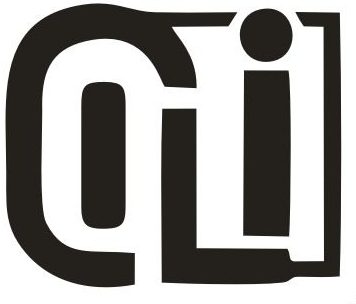CAROLINA'S GUIDE TO LEATHER
Carolina Leather Working Gloves
Leather from Carolina Leather is strong, flexible, and naturally breathable. It absorbs moisture without feeling damp, which is why our leather gloves always feel dry and comfortable to wear. At Carolina Leather, we use carefully selected hides and advanced tanning techniques to ensure top-level durability, comfort, and softness.
All our gloves meet international safety standards, including those for chrome content. For customers with sensitive skin or allergies, we also offer chrome-free glove options.
What makes Carolina Leather unique is our attention to detail and commitment to quality. Each glove is crafted with care to provide a perfect balance of protection and flexibility – whether you’re working in tough conditions or looking for everyday comfort.
Know The Difference - Split vs Grain
Grain Nappa leather from Carolina Leather is a high-quality, full-grain or top-grain leather, specially tanned to be extra soft, smooth, and flexible. Made from selected calf or lamb hides, it resists moisture naturally and offers excellent fingertip sensitivity, making it perfect for assembly gloves and precision work..
Split leather from Carolina Leather has a slightly rougher surface than grain leather and is available in various thicknesses. It offers good heat resistance and durability, making it ideal for heavy-duty work gloves. The textured surface also provides a firm grip, which is especially useful in tough working conditions.
Leather From Animal-Skins
COW HIDE
Good Abrasion Resistance: Durable and tough, ideal for heavy-duty work.
Attractive Appearance: Smooth texture with a refined, professional look.
Good Thermal Protection: Provides reliable insulation against heat and cold.
Cowhide leather is known for its strength, thickness, and long-lasting performance making it a trusted choice for industrial, construction, and outdoor applications.
SHEEP HIDE
Excellent Dexterity: Allows precise hand movements for detailed tasks.
Soft and Supple: Naturally flexible and comfortable for extended wear.
Superior Sensitivity: Ideal for jobs requiring a delicate touch and control.
Sheepskin leather is lightweight yet durable, offering exceptional comfort and control—perfect for assembly work, inspection, and fine handling tasks.
GOAT HIDE
Highest Natural Lanolin Content: Keeps the leather soft and naturally water-resistant.
Excellent Wear and Abrasion Resistance: Built to withstand regular use.
Soft and Pliable: Comfortable to wear without sacrificing durability.
Perfect for Medium Duty Jobs: Ideal balance of toughness and flexibility.
High Tensile Strength: Strong and resilient, even under stress.
| LEATHER TYPE | ABRASION RESISTANCE | PUNCTURE RESISTANCE | TENSILE RESISTANCE | STRENGTH | BREATHABILITY | TACTILE FLEXIBILITY | INSULATION SENSITIVITY | MOISTURE ABILITY | RELATIVE RESISTANCE | COST |
|---|---|---|---|---|---|---|---|---|---|---|
| Grain Cowhide | Best | High | Best | High | Fair | Good | Good | Good | Fair | Mid-range |
| Split Cowhide | Fair | High | Best | High | Best | Fair | Fair | Good | Fair | Low |
| Grain Goatskin | High | High | High | High | Fair | High | High | Low | Good | Mid-range |
| Grain Sheepskin | Good | Good | High | High | Fair | High | High | Low | Good | Mid-range |
Types of Thumbs
Keystone thumbs offer the highest range of motion and are the most comfortable. This style provides a wide range of applications and is considered the most ergonomically correct work glove design.
Wing thumbs are designed for open-handed work such as pushing, pulling, and lifting. The seams are not exposed to wear when the palm is open, which helps extend the life of the work glove.
Straight thumbs are designed for close-fisted work such as shoveling, prying, and sweeping. When the fist is closed, the seams are positioned outside the wear area, helping to prolong the glove’s durability.
Cuff Materials
RUBBERIZED CUFFS
Rubberized cuffs are made from two fabric layers with a rubber material laminated in between them. This cuff provides moderate impact abrasion resistance.
LEATHER CUFFS
Leather cuffs are primarily made from split leather. These cuffs are durable, launderable, and designed for extended wear.
DUCK CUFFS
Duck cuffs are made primarily for laundering purposes. The material is made from a single layer of heavy cotton.
LAMINATED CUFFS
Starched cuffs are made from two layers of fabric laminated and starched together. These cuffs provide mild impact and abrasion protection.
DENIM CUFFS
Denim cuffs are made from a single-ply denim fabric. These cuffs are typically used in economical products.
Cuff style

KNIT WRIST
Promotes warmth, fit and helps prevent common particles from entering the glove.

SAFETY CUFF
2-1/2″ in length, this is the most common cuff style available. Safety cuffs help protect the wrist area and slide on and off easily.

GAUNTLET CUFF
4″ In length, the gauntlet cuff provides better forearm protection.

BAND TOP
The band top slides easily on and off the hand. It provides comfort and moderate wrist protection.

SLIP-ON
Easy to slide on and off the hand. It provides no substantial wrist protection.

SELF-HEM
Similar to slip-on, but use similar leather (as of top).
